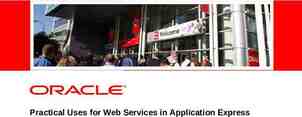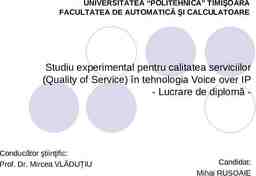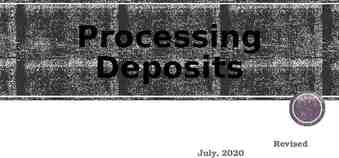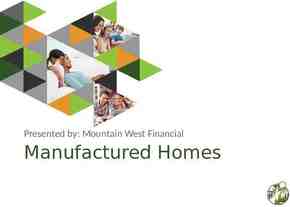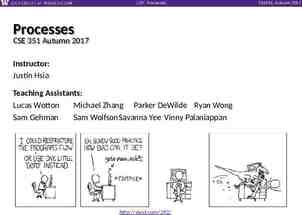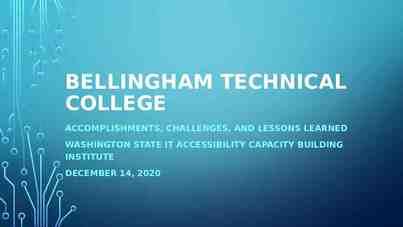Information Technology & Theological Education APTA: 5th
19 Slides275.00 KB

Information Technology & Theological Education APTA: 5th General Assembly

1. Introduction "Some people say that they feel the future is slipping away from them. To me, the future is a big tractor-trailer slamming on its brakes in front of me just as I pull into its slip stream. I am about to crash into it." Danny Hillis, The Millennium Clock, http://www.wired.com/wired/scenarios/clock.html

"The truth of the matter is, 1. change is faster today. The reason is that the rate of change of society is a function of the age at which you gain access to the dominant technology. The entrylevel age for computing and communications is 2 to 4. So, at least in North America, kids are now learning their stuff by 4 years old." "Interview: Lippman on Learning: Fundamental Changes," SyllabusWeb (February, 2002), http://www.syllabus.com/syllabusmagazine/ar ticle.asp?id 6073 Introduction

1. Introduction: De Grew Industrial Society Technology Peripheral Once-only Education Fixed Curriculum Institutional Focus Self-Contained Local Focus Information Society Multimedia Central Lifelong Learning Flexible / Open Curriculum Learner Focus Partnerships Global Networking

2. The "T" in IT 2.1 Digital Libraries 2.2 Speech-Text / Text-Speech (as well as a native speaker/hearer) 2.3 Telepresence 2.4 World Memex 2.5 Trouble-free, always up, secure systems 2.6 Automatic Programmer

2. The "T" in IT 2.7 The Challenge: – “Multinational media companies are creating education programmes which leapfrog over schools and appeal directly to children and their parents . . . one senior executive has predicted that educators would be paid more than film stars by the end of the century. . . but this international 'edutainment' material would be driven by baby commercial values . . . we risk losing out to a tidal wave of relatively low quality and certainly low cost material with just enough educational content to make it attractive to parents.” David Puttnam, the producer of “Chariots of Fire,” 1994

2. The "T" in IT 2.8 The New Future: – Students will use portable computers and even pocket Web browsers to surf the Web from anywhere on campus using wireless technology. – More and more classes will be digitally “taped” so you can use a “virtual VCR” to review and study the lectures as you prepare for exams. – More and more quizzes will be administered on the Web, with instant feedback on how you are doing, so you know where you need to work harder (or when you can relax). – Groupware will be a common tool for group studying, much as e-mail is used today. Unlike e-mail, groupware will allow students, faculty, and teaching assistants to create, track, and participate in class discussions in the evening over the Internet.

2. The "T" in IT 2.8 The New Future: – The Electronic Library will provide access to course materials on “reserve” as well as Web information organized into knowledge you can depend on. Most exciting, with a click of a button, you will be able to access a reference librarian, who can help you find the material you need in real time. – Learningware modules will let you learn your way. They will be interactive, customizable, and dynamic. Rather than just reading about that industrial process, you will build your own production facility using computer simulation tools. If you make a mistake, you will see it immediately. [Peter Siegel, “The Age of Digital Learning: A Copernican Revolution,” The Academic Information Technologies Newsletter, http://www.ait.iastate.edu/newsletter/199912/article1.html]

3.1 Open Source Approach to Research The basic idea behind open source is very simple: When programmers can read, redistribute, and modify the source code for a piece of software, the software evolves. People improve it, people adapt it, people fix bugs. And this can happen at a speed that, if one is used to the slow pace of conventional Linus’s Law: “Given software development, seems enough eyeballs, all bugs astonishing.” are shallow” Eric Steven Raymond, The Cathedral http://www.opensource.org/ and the Bazaar

3.1 Open Source Approach to Research It is only under certain conditions that cooperative efforts may be expected to be more productive than competitive and individualistic efforts. Those conditions are: 1. Clearly perceived positive interdependence 2. Considerable promotive (face-to-face) interaction 3. Clearly perceived individual accountability and personal responsibility to achieve the group’s goals 4. Frequent use of the relevant interpersonal and small-group skills 5. Frequent and regular group processing of current functioning to improve the group’s future effectiveness

3.1 Open Source Approach to Research Two Example in O.T. & N.T. – Project “eL” The XML Leningrad Codex: “The goal of the XML Leningrad Codex markup project is to produce a fresh, from scratch "mirror image" of the Leningrad Codex of the Hebrew Bible, encoded at the character/glyph level in UNICODE, which will be suitable for use in "XML-aware" applications (word processors, database engines, webapplications). Such an encoded text can be used for an infinite variety of purposes and will allow for collaborative projects via the Internet to "pyramid" knowledge, encourage the "reuse" of basic data and analysis, extend the value of limited human and financial resources, and reduce duplication of effort.

3.1 Open Source Approach to Research Two Example in O.T. & N.T. – Open Text: The OpenText.org project is a web-based initiative to provide annotated Greek texts and tools for their analysis. The project aims both to serve, and to collaborate with, the scholarly community. Texts are annotated with various levels of linguistic information, such as text-critical, grammatical, semantic and discourse features. Beginning with the New Testament, the project aims to construct a representative corpus of Hellenistic Greek to facilitate linguistic and literary research of these important documents. These annotated texts will be made freely available to the scholarly community on the understanding that they will in return contribute any additions or alterations made to them. Further, it is anticipated that scholars will be involved in the text annotation process and in the use and development of analytical tools.

3.1 Open Source Approach to Research Discussion Boards: – Society for Pentecostal Studies Bulletin Board at: http://208.178.1.126/cgi-local/ultimatebb.cgi – The Japan Society for Pentecostal Studies: Members, Executive Committee, Japan Articles Task Force: http://kirisutokyo.com/ jsps/

3.2 Dealing with the mass of Information Bibliographic Software: – Scholar's Aid (Doyoung Na) – a new "lite" version now at http://www.scholarsaid.com – EndNotes at http://www.endnote.com/ENhome.htm – GetARef at http://www.getaref.com/ – Library Master at http://www.balboasoftware.com/ – Elfin Forest – Software for Writing Thesis, Dissertation, Senior Projects: http://www.elfin.com/home.htm

3.3 Educational shifts z

4. Creating a Document 4.1 Use of fonts for Biblical languages: Greek, Hebrew, Transliteration, etc. 4.2 Modern Languages: Japanese, Chinese (2 types), Korean, etc. [Windows 2000 & Windows XP] 4.3 Creating Graphs & Charts 4.4 Pictures: 4.4.1 Collecting the pictures: Scanning from hardcopies; Downloading from the internet; Special picture collections; Capturing from VCD/DVD/Video; Digital Pictures & Camcorders

4. Creating a Document 4.4 Pictures: 4.4.2 Processing the Pictures: From Bit Map to Compressed formats 4.4.3 Importing & Exporting 4.4.4 Pictures in MS Word, PowerPoint, etc. verses Pdf 4.4.5 Saving the Picture Database 4.4.6 PhotoShop, ThumpsPlus, etc.

4. Creating a Document 4.5 Using Links: Within the document; Another document; an URL 4.6 From document to pdf or html: 4.6.1 HTML (Hypertext Markup Language): 4.6.1.1 Advantages: possible cross-platform; internet/intranet usage; links 4.6.1.2 Disadvantages: font problems; browser problems; possible alignment problems; big files; scattered components 4.6.1.3 MS Word, Dreamweaver & Frontpage

4. Creating a Document 4.6.2 Pdf's (Portable Document File): 4.6.2.1 Advantages: fonts imbedded; all in one file; compressed; easy to send/download on the internet. 4.6.2.2 Disadvantages: difficult to adjust; not good at exporting to other programs; not as strong in linking on the internet. 4.6.2.3 Software: Adobe Acrobat, Framemaker, Pagemaker, Photoshop;

